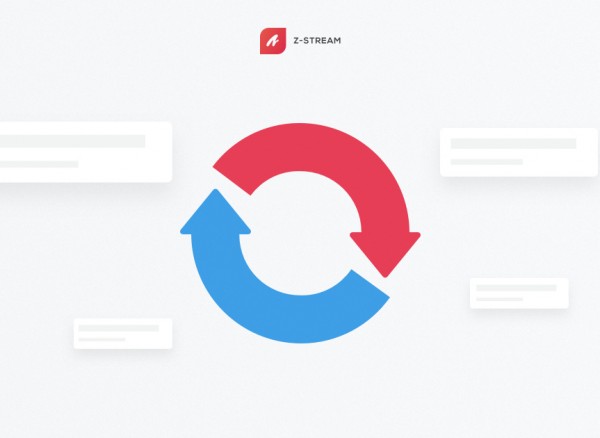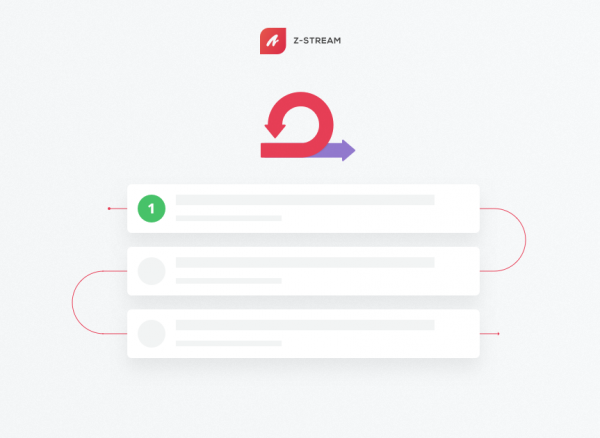
Beloved management guru Peter Drucker said it best: “There’s nothing so useless as doing efficiently that which should not be done at all.” While Drucker’s straightforward approach and matter-of-fact tone may raise a few eyebrows, it’s tough to deny that he has a point. His proclamation highlights one of the most basic concepts of Lean: focusing on processes that actually contribute to productivity rather than getting caught up in other projects.
Lean is as old as the modern manufacturing industry – in fact, Henry Ford’s novel mass production system serves as a shining example of how Lean can reduce the time and funds a company must expend in order to create their products. Eiji Toyoda, the founder of Toyota, was one of the first to go beyond Ford’s manufacturing improvements and the assembly line. Toyota’s manufacturing prowess became world-famous because of Lean practices and the outlining and communication of Lean ideas across the organization.
The company partnered with an outside source to bring about a new means of production – one centered around self-monitoring tooling and appropriately-sized machines perfectly suited for the required manufacturing volume in order to help make products more quickly and efficiently. Steps like these form the bulk of Lean’s beginnings, but the concept has come a long way since the early 1900s.
What is Lean?
Now you’ve got a solid handle on how Lean emerged during the twentieth century, but what exactly is Lean methodology?
Lean methodology centers around maximizing value delivered to the customer and slashing waste to the greatest extent possible. Lean is a customizable guideline that can be altered in order to help organizations meet one central goal – offering customers more value while utilizing fewer resources to do so.
Implementing Lean is a multi-step process and every level of an organization can be impacted by the ripples of Lean transformation. The goal of Lean is to cut waste from entire value streams rather than focusing on a handful of fixed points for improvement. That means eliminating wasteful processes that require too much human effort, shifting budgetary priorities, and shifting focus towards a more optimized approach to doing business.
Those who subscribe to Lean methodology focus on stamping out inefficiency where it begins. Three terms, known colloquially as “The Three Ms,” were popularized by the Toyota production system and serve to explain wasteful practices that should be eliminated:
- Muda refers to those activities which consume resources while failing to create value for the customer. Type One Muda includes activities that cannot be eliminated immediately. Type Two Muda consist of activities which can be eliminated quickly
- Mura centers around unevenness within an operation, like a schedule dictated by a production system rather than end-user demands
- Muri concerns overworking equipment or operators — usually by way of forcing them to work harder, faster, or longer than should be required
The Objective of Lean Methods
So, what’s the goal of Lean methodology?
The primary goals of Lean methods center around the same core ideas. While each organization may have its own individual milestones and goals going into a new Lean process, they’re likely to focus on the following concepts.

Improvements in Quality and Customer Satisfaction
One of the most critical of the Lean goals concerns improving quality. This may refer to product quality or the quality of the services an organization provides. Brands that wish to remain competitive in today’s fast-paced and consumer-driven market must be able to offer clients or customers value based on the customers’ real needs. Perhaps the easiest way to achieve this is through creating products (or offering services) of notably high quality, created with input from customers themselves.
Eliminating Waste
Lean processes also serve to eliminate waste. This may look different depending on the organization within which Lean is implemented. Ideally, since companies should strive to apply Lean methodology in as many areas of business as possible, this will present several opportunities for meaningful improvement.
Brands in some sectors, such as manufacturing, may be able to cut down on their waste more than others. Some industries are infamous for the levels of waste that they produce. Others may not be known for wasteful practices, but can still make strides to eliminate waste by taking simple steps such as:
- Reviewing workflows, approaches, and approval processes to reduce bottlenecks and streamline repeated actions
- Cutting back on energy use and reducing physical waste by relying on recyclable and renewable resources
- Leveraging appropriate alternatives to tools that may be overkill
- Embracing other eco-friendly and time-efficient practices
Reducing Total Required Costs and Time
Adhering to Lean methodology can help an organization save time and funds. The natural flow of a Lean process leads easily into a quicker work pace. Whether it’s faster production times in a manufacturing plant or a group of employees filling out compliance forms more quickly, the goal of Lean is to help brands utilize their time more efficiently.
The goals of Lean methodology all play into each other. Reduced waste and improved efficiency, which are goals of Lean in and of themselves, naturally result in reduced time required for core business processes.
The same can be said for funds. One of the most alluring aspects of adopting Lean in the workplace is the potential for cost-savings. If production or other business processes accelerate, the same tasks can be completely more quickly. That means that it gets easier to either make more products (or offer more services) or to make more money from products that can be created faster than previously possible.
Lowering costs is one of the most essential practices for remaining competitive in today’s bustling market. It doesn’t matter what you’re selling or who you’re selling it to — if you can keep costs low, you’ll have cash to funnel into innovative new offerings or company-wide improvements.
Principles of Lean
Now that you understand the underlying goals of Lean, you may be left with questions about the guiding principles of the process. What are Lean principles? Why are they so important? How do they contribute to a greater Lean effort?
It should be noted that Lean’s foundational principles are simple. Lean management principles center around the pursuit of continuous improvement and deep respect for people. That means respecting their time, their skills, and their input are all crucial to successful Lean implementation.

There are five Lean principles that form the basis of the concept. Abiding by these principles allows organizations to successfully navigate new ways of doing business and interacting with clients, employees, and the world around them. Each principle serves its own purpose as it relates to meeting and exceeding the goals of Lean mentioned above.
The Five Principles of Lean
- Define value
Effective Lean teams should aim to review their products and services as frequently as possible to understand the value they are creating
Opinions should be formed and decisions should be made through the eyes of the end-purchaser. not through the eyes of an employee
What do our customers need? Why, where, and when do they need it? How do we produce products or services that meet those needs? When and how will we deliver the product or services to the customer?
- Map value streams
Evaluate each process that contributes to the end goal of creating products (or offering services) and lending value to customers
Create a physical map of the organization; this map should serve as an outline for each component of the business (production, marketing, HR, etc.): each aspect of the business should, ideally, also have its own map for further scrutiny
Assess how value moves through the organization — locate pitfalls and pain points and pinpoint what’s working well in other areas
What happens next? Who does it? Do we understand who the decision-makers in each process are? Do we understand what they have already and what they need? Where do we keep the supplies that we need?
- Optimize value flow
Utilize the value stream map to analyze process wins and inefficiencies
Work to create a positive and productive flow by maximizing efficiencies and cutting waste
Assess each individual value stream and the way in which it flows to end-users; determine whether each step is critical to delivering value
Aim to minimize friction and stalls in value flow
How do we streamline these aspects of the organization? Which steps can we minimize or eradicate in order to improve value to customers?
- Understand customer pull
Turn back to value stream maps in order to determine end-users’ perspectives on final products
Sometimes, it may help to assess the value stream map in reverse; look at the operations in the opposite order of how the business sees them
Define ways for customers to take power over the customer experience and purchasing process
Customers should be able to pull value on an as-needed basis
Hone in on customers’ exact, true needs in order to begin theorizing processes which deliver requirements with as little waste as possible
How much of this does a customer truly need? How do we deliver what we provide to customers exactly when they need it?
- Pursue perfection
Analyze each step of the process thoroughly and don’t be afraid to make changes
Focus on the elements that add value to your organization
Tighten processes, cut out waste, and deliver value exactly when it’s needed
Perfection isn’t possible, but the pursuit of it leads to meaningful change and sizable improvements
How did the execution of our plans work? Did we recognize notable improvements in efficiency? What can we do better in order to improve our methods? How can we bring even more value to customers?
Why Use Lean Methodology (and When to Use it)
Lean implementation looks vastly different from one organization to the next, even if those organizations operate within the same industry. It’s easy to see how the implementation of this ideology could vary greatly between sectors – implementing Lean software development, for example, will involve very different processes than implementing Lean manufacturing practices.
While Lean methodology may sound ideal for practically any scenario, it does have its limitations. There are certain situations which lend themselves to a Lean mindset, and the guiding principles and goals of Lean may inform a vast number of business goals and processes, but the implementation of Lean works best in a handful of scenarios.
Why Utilize Lean Methodology
- Quickly eliminate risk
- Improve team communication
- Optimize workflow and value flow
- Identify and minimize waste
When to Utilize Lean Methodology
- For small projects
- With professional, flexible employees who are willing and able to change
- With customers who want to take part in the project’s implementation
Many organizations can increase their profitability, competitive advantage, and customer satisfaction by implementing Lean methodology. It’s a practical framework for brands seeking to increase productivity and offer true, measurable value to their clients and customers.
Lean is not a perfect solution — in some scenarios, it may not work at all — but it can prove tremendously helpful to businesses who understand the core principles and remain open to change. The success of any Lean endeavor is heavily dependent on receptive participants who are willing to begin pursuing a higher purpose in their work.
Recent cultural shifts concerning wasteful practices have helped push Lean back into the spotlight it captured in the 1990s. Many of today’s consumers want to feel great about the brands that they support financially. This means that your business can offer its customers value, which is the central focus of Lean, without making major shifts to operations right away. Making simple switches to less wasteful or greener practices could kickstart a broader, ongoing pursuit of overall lean practices.
Lean is a way of thinking – not a list of things to do.
The most crucial takeaway that remains after the details of Lean are stripped down can be put simply. Shigeo Shingo, Japanese industrial engineer and the world’s leading expert on manufacturing practices and the Toyota Production System, said it best. There’s no doubt that Lean involves making real changes to how a business operates; but staff should place focus on changing mindsets and company culture, not on the actual goal of producing X products in Y hours. Adopting Lean methodology in the workplace can prove challenging – but it also may be one of the most valuable decisions a business can make.



